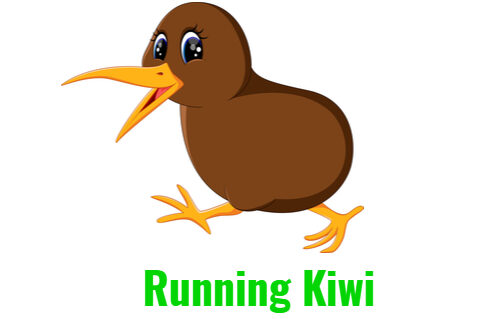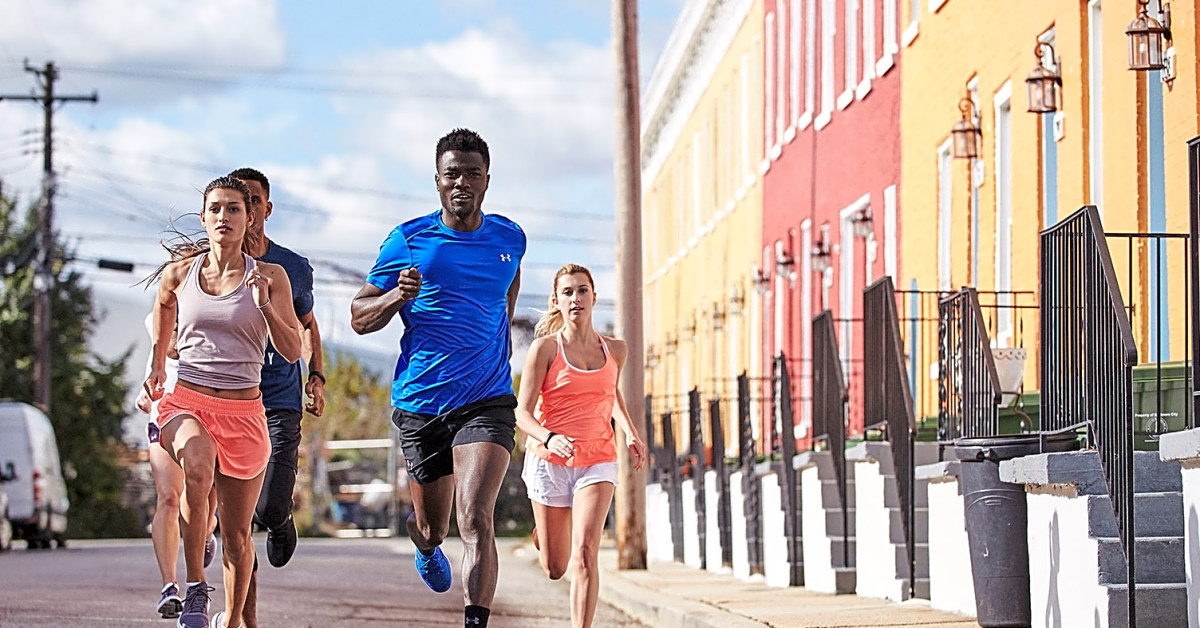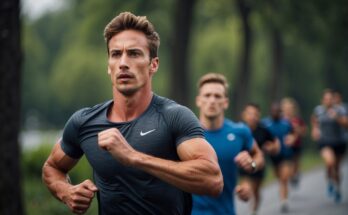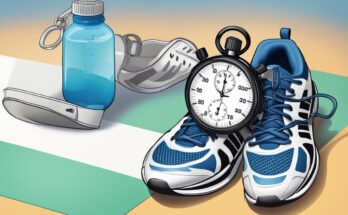Running a 5K race is a great way to test your endurance and speed. It’s a popular distance for runners of all levels, from beginners to experienced athletes. If you’re looking to improve your 5K time, there are several things you can do to enhance your speed, endurance, and overall performance.
One of the most important things to understand about running a 5K is that it’s not just about speed. While speed is certainly important, endurance and strength are also critical factors in a successful race. To run a faster 5K, you’ll need to focus on building your endurance and strength through a combination of training and other techniques. In addition, you’ll need to pay attention to your nutrition and recovery to ensure that your body is properly fueled and able to perform at its best.
Key Takeaways
- Building endurance and strength is just as important as speed when it comes to running a 5K.
- Proper nutrition and recovery are essential for optimal performance.
- A combination of training and other techniques can help you improve your 5K time.
Understanding the 5K Race
A 5K race is a popular distance for runners of all levels. It is a race that covers a distance of 3.1 miles. Many runners use the 5K race as a benchmark for their running progress and aim to improve their personal record (PR) with each race they participate in.
On race day, runners gather at the starting line and wait for the race to begin. The energy is high as everyone prepares to run their best race. The finish line is the ultimate goal, and runners strive to cross it as quickly as possible.
5K races are held all over the world, and runners of all ages and abilities participate. The race time for a 5K can vary greatly depending on the runner’s skill level and training.
To run a faster 5K, runners must understand the distance and what it takes to finish strong. They must also have a solid training plan in place leading up to the race.
Overall, the 5K race is a great way for runners to challenge themselves and improve their running abilities. With the right training and mindset, anyone can run a faster 5K and achieve their personal goals.
Importance of Training
Training is crucial for anyone who wants to run a 5k faster. It helps to build endurance, increase speed, and reduce the risk of injury. Without proper training, runners may struggle to complete the race or even worse, get hurt during the race.
A good training plan should include a mix of different workouts such as long runs, speed work, tempo runs, intervals, fartleks, and endurance workouts. Cross-training can also be beneficial as it can help to strengthen muscles that are not used as much during running.
Long runs are important for building endurance and increasing the distance that a runner can cover. These runs should be done at a comfortable pace and gradually increased over time. Speed work, such as sprinting or hill repeats, helps to increase a runner’s speed and improve their form.
Tempo runs are a great way to improve a runner’s lactate threshold, which is the point at which the body starts to produce lactic acid. These runs involve running at a steady pace for a set amount of time or distance. Intervals involve running at a faster pace for a short period followed by a recovery period. Fartleks are similar to intervals but involve changing the pace and distance randomly.
Endurance workouts are designed to help runners maintain a steady pace for a longer period. These workouts can include running at a slower pace for a longer distance or running at a faster pace for shorter distances with short recovery periods.
In conclusion, training is essential for anyone who wants to run a 5k faster. A good training plan should include a mix of different workouts that target different aspects of running. By following a well-designed training plan, runners can build endurance, increase speed, and reduce the risk of injury.
Speed Enhancement Techniques
Improving speed is crucial for running a faster 5K. There are various speed enhancement techniques that can help runners achieve their goal pace. Here are some effective techniques:
Speed Workouts
Speed workouts, also known as speedwork, are high-intensity training sessions that focus on increasing speed and endurance. These workouts can help runners improve their aerobic capacity and build muscle strength. One popular speed workout is the 1-2-3 intervals, which involves running at different paces for different intervals. For instance, a runner may run at a slow pace for one minute, followed by a moderate pace for two minutes, and then a fast pace for three minutes. This pattern is repeated for several sets.
Goal Pace Training
Training at goal pace is essential for runners who want to run a faster 5K. This involves running at the pace that the runner wants to achieve during the race. By practicing at this pace, runners can improve their endurance and get used to running at a faster speed. It is recommended to incorporate goal pace training into the runner’s regular training routine.
Hill Training
Hill training is another effective way to improve speed and endurance. Running uphill requires more effort and can help build leg muscles, which can translate to faster running on flat surfaces. Runners can incorporate hill repeats into their training routine to improve their speed and endurance.
Strength Training
Strength training is essential for runners who want to increase their speed and endurance. By building muscle strength, runners can improve their running economy and reduce the risk of injury. Strength training exercises such as squats, lunges, and calf raises can help runners improve their leg strength and power.
Incorporating these speed enhancement techniques into a regular training routine can help runners improve their speed and run a faster 5K. However, it is important to remember that consistency and patience are key to achieving long-term results.
Building Endurance and Strength
To run a 5k faster, it is important to build endurance and strength. Endurance allows runners to maintain a steady pace throughout the entire race, while strength helps runners push through the tough parts of the course.
One way to build endurance is through low-intensity training, such as long runs and steady-state runs. These types of runs help to improve aerobic capacity, which is essential for endurance running. It is also important to incorporate speed work into training, as this helps to improve both endurance and speed.
Strength training is also important for improving 5k times. Strong muscles help runners maintain good form and power through hills and other challenging parts of the course. Exercises such as squats, lunges, and deadlifts can help to build leg strength, while upper body exercises like push-ups and pull-ups can improve overall body strength.
In addition to traditional strength training exercises, runners can also incorporate plyometric exercises into their training. Plyometrics involve explosive movements, such as jumping and bounding, which can help to improve power and speed.
Overall, building endurance and strength is essential for improving 5k times. By incorporating a combination of low-intensity training, speed work, and strength training into their routine, runners can improve their aerobic capacity, build strong muscles, and power through the toughest parts of the course.
Running Gear Essentials
When it comes to running a 5k faster, having the right gear can make all the difference. Here are some essentials to consider:
Running Shoes
The most important piece of gear for any runner is a good pair of running shoes. Look for shoes that are comfortable and provide the right amount of support for your feet. Consider factors such as arch support, cushioning, and stability when choosing your shoes. It’s also important to replace your shoes regularly to ensure they are still providing the support you need.
Clothing
Wearing the right clothing can help you stay comfortable and perform at your best. Look for moisture-wicking fabrics that will keep you dry and cool during your run. Avoid cotton, which can trap sweat and lead to chafing. Consider investing in running-specific clothing such as shorts, tights, and tops that are designed to move with your body and provide the right amount of support.
Accessories
There are a few accessories that can make your runs more comfortable and enjoyable. A good pair of socks can help prevent blisters and keep your feet dry. A hat or visor can help keep the sun out of your eyes and protect your skin from harmful UV rays. Consider investing in a running watch or GPS device to track your progress and help you stay on pace.
By investing in the right gear, you can help ensure that you are comfortable, supported, and able to perform at your best during your 5k race.
Nutrition and Recovery
Proper nutrition and recovery are crucial for improving performance and preventing injury when training for a 5k. Here are some tips to help optimize nutrition and recovery:
Fueling
Before a 5k, it’s essential to fuel up on easy-to-digest carbs and moderate amounts of protein. Avoid eating heavy, high-fat foods, as these can cause stomach discomfort during the race. Some examples of good pre-race meals include oatmeal with fruit, a bagel with peanut butter, or a banana with yogurt.
During the race, it’s important to stay hydrated and maintain energy levels with easily digestible carbohydrates, such as sports drinks or gels. It’s also crucial to replenish fluids and electrolytes after the race to aid in recovery.
Recovery Runs
Recovery runs are low-intensity workouts that aid in recovery by increasing blood flow to the muscles and reducing soreness. These runs should be done at a conversational pace and can be done the day after a hard workout or race.
Sleep
Getting enough sleep is essential for proper recovery and overall health. Aim for 7-9 hours of sleep per night to optimize recovery and improve performance.
Nutrition
In addition to pre- and post-race fueling, it’s essential to maintain a well-balanced diet throughout training. A diet rich in fruits, vegetables, whole grains, and lean proteins can help provide the necessary nutrients for optimal performance and recovery.
Recovery
After a hard workout or race, it’s essential to prioritize recovery to prevent injury and improve performance. This includes stretching, foam rolling, and other recovery techniques such as ice baths or massages. It’s also important to listen to your body and take rest days when needed to allow for proper recovery.
Preparation for Race Day
Preparing for race day is key to achieving a faster 5k time. It involves a combination of physical and mental preparation, as well as understanding the course and potential challenges that may arise.
One important aspect of preparation is warming up before the race. A proper warm-up can help prevent injury and improve performance. It should include light jogging, stretching, and dynamic exercises such as high knees and butt kicks. It is recommended to warm up at least 15-20 minutes before the race start time.
Another important factor to consider is the course itself. Familiarizing oneself with the course beforehand can help determine the best strategy for the race. For example, if there are hills or sharp turns, it may be necessary to adjust pacing accordingly. It is also important to be aware of any potential hazards such as uneven terrain or obstacles.
Weather is another factor that can greatly impact race day performance. It is important to check the weather forecast beforehand and dress appropriately. In hot weather, it is important to stay hydrated and wear light, breathable clothing. In cold weather, it is important to wear layers and protect extremities such as hands and ears.
Finally, mental preparation is key to achieving a faster 5k time. It is important to stay focused and positive, and to have a clear race strategy in mind. Visualizing a successful race beforehand can also help boost confidence and motivation. By preparing both physically and mentally, one can increase their chances of achieving a faster 5k time.
Avoiding Injuries
Injuries can be a major setback for runners looking to improve their 5k time. To avoid injuries, it is essential to take a few precautions before, during, and after the run. Here are some tips for avoiding injuries while running a 5k:
Warm-up and Stretching
Before starting the run, it is essential to warm up the muscles and joints. A good warm-up routine can help increase blood flow, loosen up the muscles, and prepare the body for the run. It is recommended to start with some light jogging or walking for 5-10 minutes, followed by some dynamic stretches such as leg swings, lunges, and high knees. Dynamic stretching can help improve flexibility and range of motion, reducing the risk of injuries.
Foam Rolling
Foam rolling is a self-massage technique that can help release muscle tension and improve flexibility. It involves using a foam roller to apply pressure to different parts of the body, such as the calves, hamstrings, and quads. Foam rolling can help reduce muscle soreness and prevent injuries, especially after a long run.
Gradual Progression
To avoid injuries, it is essential to increase the running distance and intensity gradually. Jumping into an intense training program without proper preparation can increase the risk of injuries such as shin splints, stress fractures, and plantar fasciitis. It is recommended to follow a training plan that gradually increases the running distance and intensity over a period of weeks or months.
Cross-training
Cross-training can help improve overall fitness and reduce the risk of injuries. Incorporating activities such as swimming, cycling, or yoga can help strengthen different muscle groups, improve flexibility, and reduce the impact on the joints. Cross-training can also help prevent overuse injuries that can occur from running too frequently.
By following these tips, runners can reduce the risk of injuries and improve their 5k time. It is essential to listen to the body and take rest days when needed to prevent injuries.
Monitoring Progress
Monitoring progress is crucial to improving one’s 5k time. Tracking progress can help runners identify areas that need improvement and adjust their training accordingly. Here are a few ways to monitor progress:
Time and Pace
One of the most obvious ways to monitor progress is to track the time it takes to complete a 5k and the pace at which it is completed. Runners can use a stopwatch or a running app to track their time and pace. By comparing their current time and pace to their previous times and paces, runners can determine if they are improving or not.
Mileage
Another way to monitor progress is to track the mileage covered during training. Gradually increasing mileage can help runners build endurance and improve their 5k time. It is important to increase mileage gradually to avoid injury.
Heart Rate and Lactate Threshold
Heart rate and lactate threshold are important indicators of fitness and can be used to monitor progress. Runners can use a heart rate monitor to track their heart rate during training. Lactate threshold is the point at which the body begins to produce more lactate than it can clear. By tracking heart rate and lactate threshold, runners can determine if they are improving their fitness level.
Rate of Perceived Exertion
Rate of perceived exertion (RPE) is a subjective measure of how hard a runner is working. It is based on how the runner feels during the run. By tracking RPE, runners can determine if they are pushing themselves hard enough during training.
Personal Record (PR)
Finally, tracking personal records (PRs) can be a great way to monitor progress. A PR is the fastest time a runner has completed a 5k. By tracking PRs, runners can see if they are improving over time.
In summary, monitoring progress is crucial to improving one’s 5k time. By tracking time, pace, mileage, heart rate, lactate threshold, RPE, and PRs, runners can identify areas that need improvement and adjust their training accordingly.
Role of a Coach
A coach can play a crucial role in helping runners prepare for a 5k race. A good coach can provide guidance and support to runners, helping them develop a training program that is tailored to their needs and goals.
Coaches can help runners identify their strengths and weaknesses, and provide advice on how to improve their performance. They can also help runners develop a race strategy, which can be critical in achieving a personal best time.
A coach can also be a great source of motivation and encouragement. They can help runners stay focused and committed to their training program, even when the going gets tough. A coach can also provide valuable feedback and support, helping runners stay on track and make progress towards their goals.
For those who are new to running, a coach can be especially helpful. A coach can provide guidance on how to get started, including advice on proper form and technique. They can also help beginners develop a training program that is appropriate for their fitness level and experience.
Overall, a coach can be an invaluable resource for runners who want to improve their performance and achieve their goals. Whether you are a seasoned runner or a beginner, working with a coach can help you take your running to the next level.
Running for Different Age Groups
Age can play a significant role in how fast a person can run a 5k. As people age, their bodies change, and they may not be able to run as fast as they once did. However, this does not mean that older individuals cannot run a 5k. With proper training and preparation, people of all ages can run a 5k and even improve their times.
For beginners, it is essential to start slow and gradually increase their speed. This is especially important for older individuals who may not have exercised in some time. They should begin with a combination of walking and running and gradually increase their running time until they can run the entire 5k. It is also important for beginners to listen to their bodies and not push themselves too hard, as this can lead to injury.
For individuals in their 20s and 30s, they may find that they can run a 5k faster than older individuals. However, they still need to train properly to improve their times. This may involve incorporating speed workouts into their training regimen, such as interval training or hill repeats. They should also focus on building endurance by gradually increasing their mileage each week.
For individuals in their 40s and beyond, they may find that their times are slower than when they were younger. However, this does not mean that they cannot improve their times. They may need to adjust their training to account for their changing bodies. This may involve incorporating more strength training to prevent injury and improve overall fitness. They should also focus on building endurance by gradually increasing their mileage each week.
In summary, people of all ages can run a 5k and improve their times with proper training and preparation. Beginners should start slow and gradually increase their speed, while older individuals may need to adjust their training to account for their changing bodies. By incorporating speed workouts and building endurance, individuals of all ages can run a faster 5k.
Advanced Running Concepts
To improve their 5K times, runners must understand advanced running concepts such as consistency, comfortable pace, and rest days.
Consistency is a vital factor in improving running times. Runners who consistently train at a high level are more likely to see improvements in their 5K times. To achieve consistency, runners should stick to their training plan and ensure they are running at their comfortable pace.
Comfortable pace is the pace at which a runner can maintain a conversation while running. It is important to run at a comfortable pace during training to avoid injury and burnout. Runners should gradually increase their pace over time to improve their overall speed.
Rest days are just as important as training days. Rest allows the body to recover and rebuild after a workout. Runners should incorporate rest days into their training plan to avoid injury and prevent burnout.
In addition to these concepts, runners can also benefit from training for longer distances such as a half marathon or marathon. Training for longer distances can improve endurance and speed for shorter races like the 5K.
Finally, runners should also consider incorporating marathon pace runs into their training plan. Marathon pace runs are runs done at the pace a runner hopes to achieve in a marathon. These runs can help improve overall speed and endurance.
By understanding and incorporating these advanced running concepts into their training plan, runners can improve their 5K times and achieve their running goals.
Frequently Asked Questions
How can I improve my 5k time by 2 minutes?
Improving your 5k time by 2 minutes requires a consistent training plan that focuses on speed and endurance. Incorporating interval training, hill repeats, and tempo runs can help increase your running speed and build endurance. Additionally, strength training and proper nutrition can also aid in improving your 5k time.
How can I increase my running speed?
Increasing your running speed requires a combination of speedwork and proper form. Incorporating interval training, hill repeats, and tempo runs can help increase your speed. Additionally, focusing on proper running form, such as maintaining a midfoot strike and engaging your core, can also help improve your running speed.
Is it better to start a 5k race fast or slow?
It is generally better to start a 5k race at a steady pace that you can maintain throughout the race. Starting too fast can lead to early fatigue and slower overall times. It is important to find a pace that feels comfortable and sustainable for the duration of the race.
How difficult is running a 5k?
Running a 5k can be challenging, especially for beginners. However, with proper training and preparation, anyone can complete a 5k race. Starting with a consistent training plan and gradually increasing mileage and intensity can help prepare your body for the demands of a 5k race.
Why am I not seeing improvement in my 5k time?
Not seeing improvement in your 5k time can be due to a variety of factors, such as lack of consistency in training, improper form, or inadequate recovery. It is important to evaluate your training plan and make adjustments as necessary. Additionally, seeking guidance from a coach or experienced runner can also help identify areas for improvement.
What are some tips for running the fastest 5k ever?
To run the fastest 5k ever, it is important to focus on speed and endurance in your training. Incorporating interval training, hill repeats, and tempo runs can help increase your running speed and build endurance. Additionally, proper nutrition and hydration, as well as adequate rest and recovery, can also aid in running a fast 5k race.




